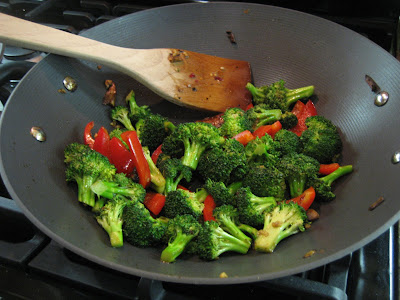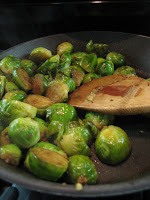Yes, it is Sunday morning and I am writing about martinis. No, I am not drinking a martini at the moment (but once the cheering/yelling at the Superbowl starts from the living room in a few hours, I might need one!).
When JR and I first moved to the peninsula, we used to go to a bar & grill in our neighborhood every once in awhile for a martini and appetizer on a Friday night - it was a nice way to start the weekend. One time, we skipped the app and just had a martini. When the bill came, we realized that all this time, we'd been drinking $10 martinis. Not that there's anything wrong with a $10 martini, it's just that these particular ones didn't quite measure up to the price point. So, like pizza, we decided that we could outdo the local options even more locally - in our kitchen.
What makes a good martini? you might ask. Yes, it's imperative to start with good quality alcohol. I tend to favor Level vodka. We currently have vermouth that the local wine shop recommended - Boissiere Extra Dry - and it's quite good. But in my opinion, what really makes the martini comes down to one simple thing: O-L-I-V-E-S.
Momentarily, I'll walk you through my personal favorite olives-for-martinis combo. But first, let's rewind a couple of years to my inspiration. I experienced one of the most fantastic martinis I had consumed to date in Bremerton, WA with my good friend Emily. Anyone who's ever been to Bremerton, WA can imagine my surprise at this (it's a military town, where cheap beer is definitely more plentiful than good martinis). The magic combo that made the martini? Blue cheese stuffed olives.
Fast forward to today. Here's my rendition:
Better than a $10 Martini
makes 2 martinis
ice
1 oz dry vermouth
4 oz high quality vodka
4 black olives (the kind from the olive bar, not from the can!)
4 pitted large green olives (ditto!)
blue cheese (I use Point Reyes)
Fill two martini glasses with ice. Allow to sit and chill while you prepare the olives.
Stuff the green olives with blue cheese. On a martini pick, alternate black olives with the stuffed green olives so that you have two of each kind on each pick (ending with a stuffed green olive). Set aside.
Discard ice from glasses. Pour about half a shot of vermouth into each glass. Over the sink, swirl the vermouth in the glass to coat the sides, dumping about half down the drain (the rest remains in the glass). Add an olive pick to each glass.
Add the vodka and a handful of ice to a shaker; shake about 10 times. Strain into martini glasses. Cheers!
 My first time adventures cooking new-to-my-kitch veggies starting with the letter 'r' continues tonight with romanesco. Romanesco is a variant of cauliflower, first documented in Italy in the sixteenth century. I initially encountered romanesco when it started making appearances in the Google cafe. When it was listed as a featured item this week on EWTS, I decided I had to try cooking it myself.
My first time adventures cooking new-to-my-kitch veggies starting with the letter 'r' continues tonight with romanesco. Romanesco is a variant of cauliflower, first documented in Italy in the sixteenth century. I initially encountered romanesco when it started making appearances in the Google cafe. When it was listed as a featured item this week on EWTS, I decided I had to try cooking it myself.













 The following recipe was made using the homemade veggie stock that I posted on Wednesday. My stock this time included leeks (in place of onion), carrots, celery, kale stems, and spinach.
The following recipe was made using the homemade veggie stock that I posted on Wednesday. My stock this time included leeks (in place of onion), carrots, celery, kale stems, and spinach. 


































